... one of the [Maoris], watching his opportunity, suddenly seized him, and dragged him down into the canoe; ... and the others, with great activity, paddled her off...
To the cape off which this unhappy transaction happened, I gave the name of Cape Kidnappers. It... is rendered remarkable by two white rocks like haystacks, and the high white cliffs on each side.
Lt. J. Cook, October 1769, The Voyages of Captain James Cook, p. 131
To the cape off which this unhappy transaction happened, I gave the name of Cape Kidnappers. It... is rendered remarkable by two white rocks like haystacks, and the high white cliffs on each side.
Lt. J. Cook, October 1769, The Voyages of Captain James Cook, p. 131
Spending Easter in Hastings, how could we not visit the gannet colony at Cape Kidnappers? Although most people travel the 8.5km along the beach on a tractor-drawn trailer, we elected to walk. For the most part the walk was quite pleasant along a mainly shingle beach, with a few sections of more solid rock.
Aside from the gannets there are a few other sights to see, including narrow side canyons, impressive fluted cliffs, and bands of colour and shells in the cliffs.
 | 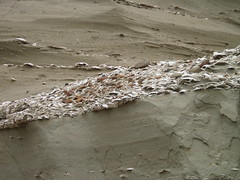 |
The first gannet colony reached is a small one at Black Reef. There is a small wade around this and then it is back to the beach. Near the end of the beach section there is another spot where it is necessary to wade, with the water potentially reaching mid-thigh.
| Black Reef Gannet Colony | |
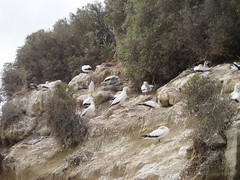 |  Juvenile tests its wings |
At the end of the beach section the track climbs up over farmland to reach the plateau where the gannets nest. The climb only took us about 12 minutes including photo stops, so it is not a big climb for the reasonably fit. The colony is an impressive sight, but comes with a very strong smell of guano. We looked around for about 10 minutes before retiring to an area with a fresh sea breeze to eat our lunch. Then it was back down the track and along the beach to the car.
| The main gannet colony at Cape Kidnappers | |
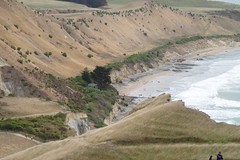 View back down to the beach. Tourist transport is visible in the large version. |  |
 Inquisitive juveniles. |  The cape viewed from the south side. |
More photos available on Flickr.
The Voyages of Captain James Cook is available online at Google Books.
The Voyages of Captain James Cook is available online at Google Books.
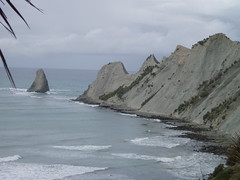
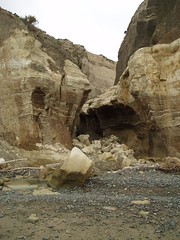
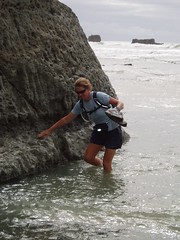
0 comments:
Post a Comment